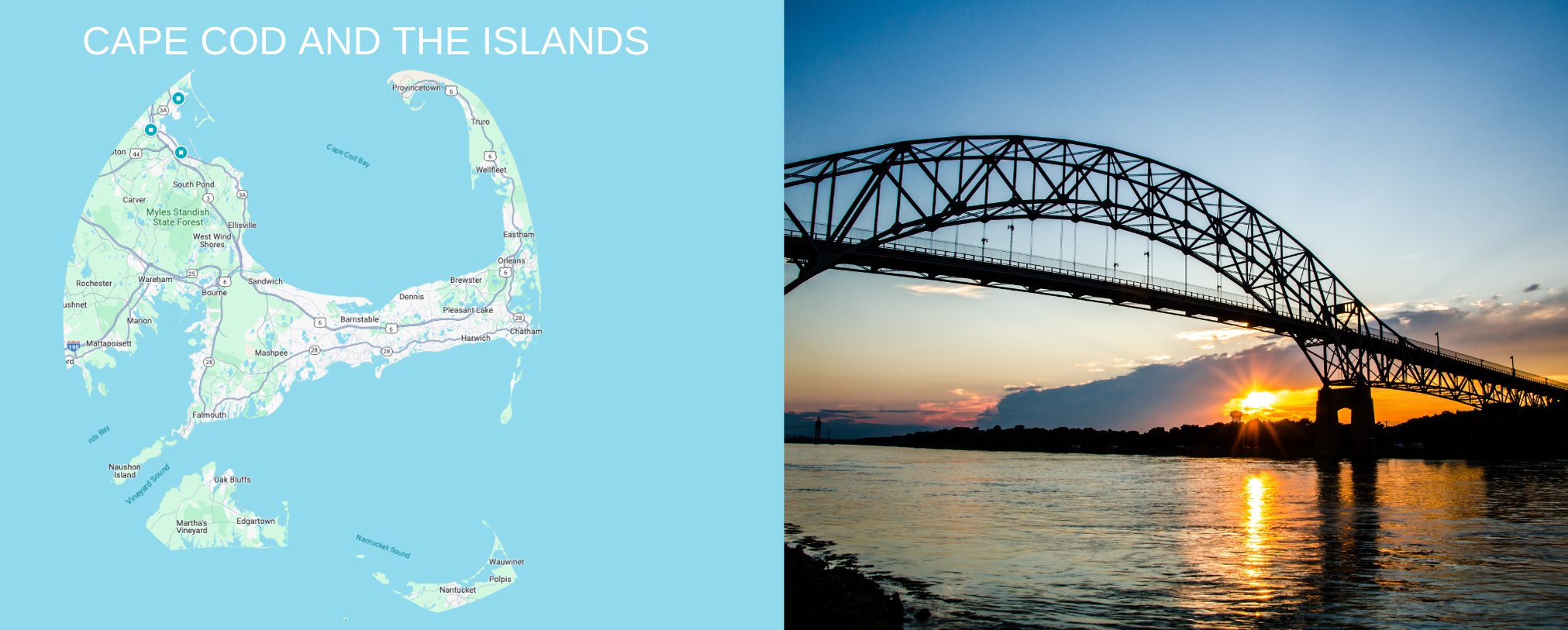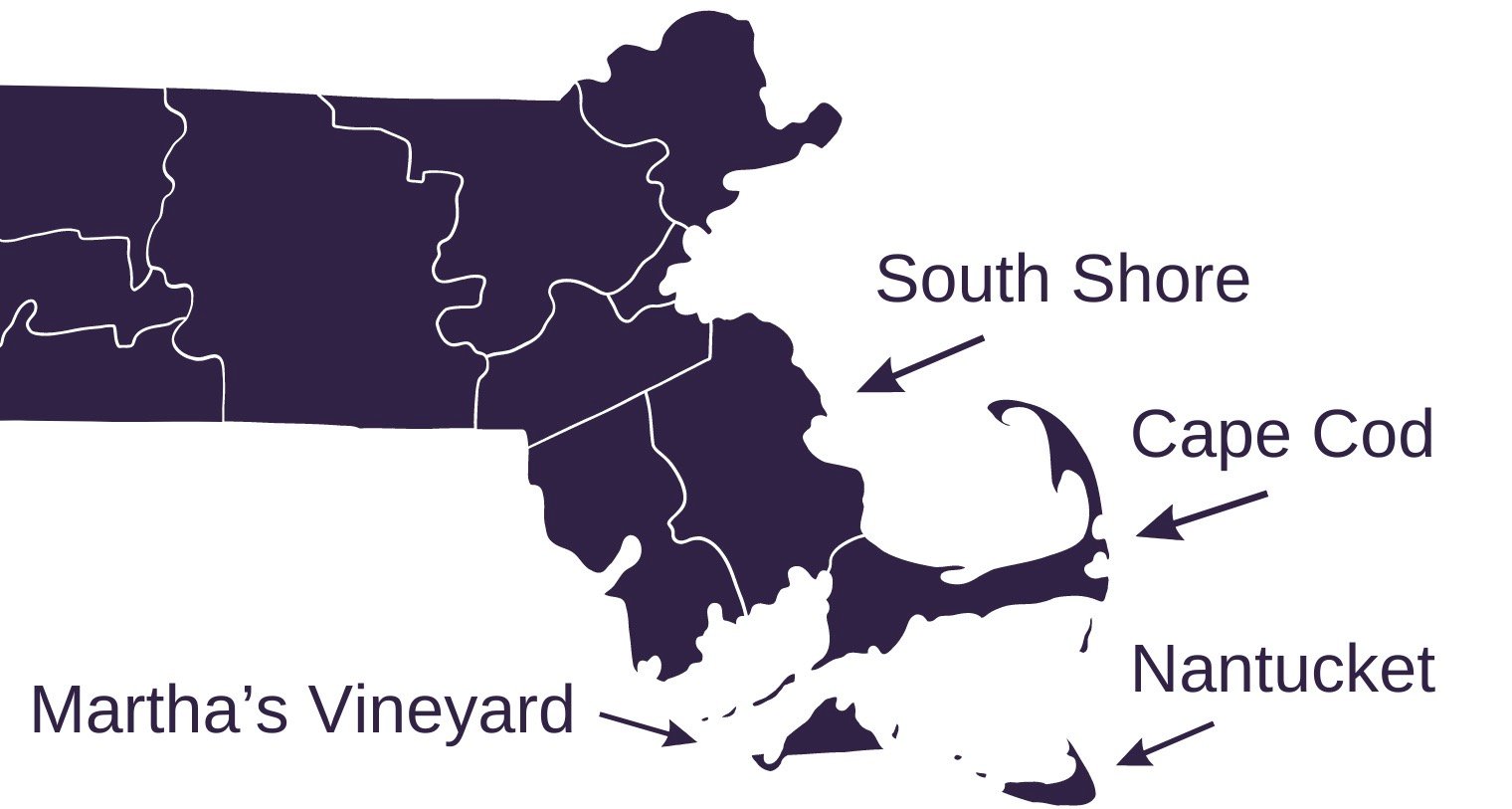When it comes to Massachusetts geography, the terms “Cape Cod” and “South Shore” often create confusion. Both regions are popular for their scenic beauty, historic significance, and coastal charm. However, they are distinct areas with unique characteristics. Let’s explore whether Cape Cod is considered part of the South Shore and delve into what makes each region special.
What Defines the South Shore?
Geography and Boundaries
South Shore MA refers to a region south of Boston that stretches along Massachusetts Bay. Unlike Cape Cod’s distinct peninsula shape, the South Shore is a block of towns located between Quincy and the Cape Cod Canal that lie along Route 3A. Several of the towns hug the coastline along the Bay.

History and Culture
The South Shore has its own unique history. Many towns in this area were among the first settlements in New England. The region combines suburban living with coastal charm, making it an attractive place for both residents and visitors. The South Shore of Massachusetts is known for its scenic coastal beauty, historic towns, and vibrant communities, and stunning beaches. Stretching from the southern suburbs of Boston to Cape Cod, the region is characterized by charming seaside villages, sandy beaches, and lush landscapes. Towns like Hingham, Cohasset, and Scituate are celebrated for their colonial architecture and rich history, offering a glimpse into New England’s past. But, all South Shore towns have historical significance and noteworthy cultural attractions. The South Shore is also famous for its maritime heritage, with numerous harbors and lighthouses dotting the coastline. In addition to its historical and natural attractions, the area offers a thriving local culture, with a mix of dining, shopping, and recreational activities, making it a desirable place to live and visit. In fact, there are many great reasons to buy a home on the South Shore.
Understanding Cape Cod
Geography and Boundaries
Cape Cod is a hook-shaped peninsula extending into the Atlantic Ocean from the southeastern corner of Massachusetts. It is known for its sandy beaches, quaint villages, and maritime activities. The Cape is divided into four main regions: Upper Cape, Mid-Cape, Lower Cape, and Outer Cape.
- Upper Cape: This is the area closest to the mainland and includes towns such as Bourne, Sandwich, Falmouth, and Mashpee. The Upper Cape is known for its convenient access to the Cape Cod Canal.
- Mid Cape: This region includes the towns of Barnstable, Yarmouth, and Dennis. It’s known for its central location on Cape Cod, making it a hub for shopping, dining, and beaches. The Mid Cape is also home to Hyannis, one of the Cape’s most bustling areas and home to major ferrys that shuttle to Nantucket and Martha’s Vineyard.
- Lower Cape: Located further east, this area includes towns such as Harwich, Chatham, Brewster, and Orleans. The Lower Cape is known for its charming villages, scenic beauty, and access to the Cape Cod National Seashore.
- Outer Cape: This is the furthest point on the Cape, consisting of towns like Eastham, Wellfleet, Truro, and Provincetown. The Outer Cape is renowned for its dramatic dunes, remote beaches, and vibrant arts scene, particularly in Provincetown.

Cape Cod History and Culture
Cape Cod, a picturesque peninsula in Massachusetts, has a rich history dating back to its Native American inhabitants, the Wampanoag people. Named by English explorer Bartholomew Gosnold in 1602, it became a pivotal location in American history when the Pilgrims first landed in Provincetown Harbor in 1620 before settling in Plymouth. Throughout the colonial period, Cape Cod thrived on fishing, whaling, and salt production. The construction of the Cape Cod Canal in 1914 enhanced its maritime significance. In the 20th century, Cape Cod transformed into a beloved tourist destination, celebrated for its charming villages, beautiful beaches, and the preservation of its natural beauty through the Cape Cod National Seashore.
Cape Cod, Massachusetts, is renowned for its unique blend of culture and attractions that draw visitors from around the globe. The region boasts a vibrant arts scene, with numerous galleries, theaters, and museums showcasing local and international talent. Cape Cod’s cultural heritage is reflected in its historic lighthouses, maritime museums, and colonial architecture.
Attractions on Cape Cod include its pristine beaches, such as those in the Cape Cod National Seashore, offering opportunities for swimming, hiking, and wildlife observation. Visitors can explore charming seaside towns, enjoy fresh seafood at local restaurants, and partake in activities like whale watching and boating. The Cape’s rich history is celebrated in sites like the Pilgrim Monument and the Heritage Museums & Gardens. Together, these cultural and natural attractions make Cape Cod a captivating destination for relaxation and exploration.
Comparing Cape Cod with South Shore Towns MA
- Tourism vs Residential Life: While both areas attract tourists during summer months, many parts of the South Shore are more residential compared to tourist-centric spots on Cape Cod. Culturally, both regions offer rich histories but differ in their atmospheres. The laid-back vibe of Cape Cod contrasts with some parts of the more suburban feel found in many South Shore towns MA.
- Geography: A primary difference between Cape Cod and South Shore MA towns lies in their geography. While Cape Cod is a distinct landmass jutting into the ocean, the South Shore consists of mainland towns that line Massachusetts Bay.
- Activities: The activities available also differ slightly. Both offer beach-going. But boating destination differ. Cape Cod offers boaters and visitors easy access to the islands of Nantucket and Martha’s Vineyard from Cape. However, boaters and visitors have easier access to Boston and the North Shore from South Shore Towns.
- Proximity to Boston: South Shore towns are considerably closer to Boston than those on the Cape. There are also public transportation options for commuters traveling from South Shore towns into the city. In addition, the Sagamore and Bourne bridges spanning the Cape Cod canal (and the only way to access the Cape) can be very crowed with traffic during peek tourist seasons.
- Sites: Both the Cape and the South Shore have stunning views, complete with historic lighthouses, beautiful beaches, along with great shopping, dining, theatre, and recreational activities. Visitors and residents of both areas enjoy these regions all year long.

Is Cape Cod Considered Part of The South Shore?
In short, no. Cape Cod is not considered part of what locals refer to as “the South Shore.” These two regions are geographically separate entities within Massachusetts with their own identities. While they share some similarities such as coastal landscapes & historical significance—they serve different purposes & cater to different residential needs due geographical distinctions.
Understanding whether or not “Is cape cod part south shore?” requires recognizing these key differences between them. Each area offers something unique from other which makes them worth visiting. Explore the regions individually, especially if you are looking for real estate opportunities on the South Shore versus Cape Cod. So next time you’re planning trip down east coast make sure know exactly where headed enjoy fullest extent possible whatever destination choose visit!

